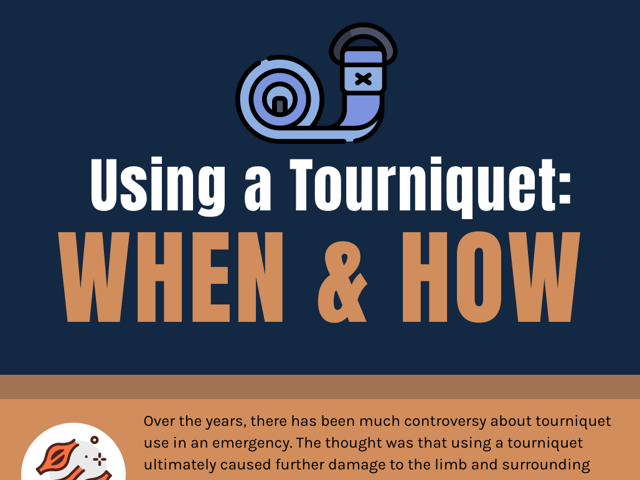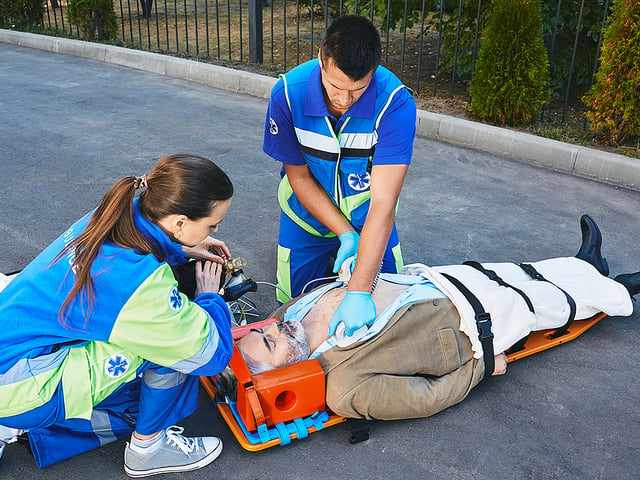
Using a Tourniquet: When and How
Over the years, there has been much controversy about tourniquet use in an emergency. The thought was that using a tourniquet ultimately caused further damage to the limb and surrounding tissue. However, recent studies have proven that using a tourniquet for uncontrolled bleeding far outweighs the risks of tissue and limb damage.
When to Use a Tourniquet
A tourniquet is recommended for use if there is uncontrollable bleeding from an extremity that is not controlled by direct pressure, with enough room to safely apply the tourniquet proximal to the injury. This applies to arms and legs only and should never be applied to a neck injury.
Types of Tourniquets
There are many types of commercial tourniquets on the market. Follow the manufacturer’s instructions for proper application. If a tourniquet is indicated but not readily available, a blood pressure cuff or makeshift tourniquet can be used.
How to Apply a Tourniquet
Although there are different types of commercial tourniquets, the application is basically the same.
-
Take appropriate safety precautions.
-
Apply direct pressure to the wound.
-
Place the tourniquet around the extremity above the bleeding site “high and tight.” For upper extremity injuries, place in the axillary region, and on lower extremities in the groin.
-
Snap the buckle into place and pull the strap tight.
-
Twist the tightening dial clockwise until the bleeding is controlled or there is no palpable distal pulse.
-
Mark the time the tourniquet was applied on the tourniquet itself, on a piece of tape applied to the patient’s forehead, or on the patient’s skin near the tourniquet.
Tourniquet Precautions
When using a tourniquet, it’s crucial to know the don’ts associated with its application.
-
Do not loosen or remove the tourniquet unless directed by medical control.
-
Do not cover the tourniquet with a bandage, blanket, or piece of clothing. Keep the tourniquet in plain view.
-
Do not use wire, a belt, or rope that could cut into the patient’s skin.
-
Do not apply a tourniquet directly over a joint; always use in the axillary or groin region.
Communication and Documentation
Like any other medical procedure or treatment, proper documentation and communication with hospital personnel are imperative. Be sure to note the exact time the tourniquet was applied, where it was applied, and the rationale for its use. First and foremost, only use a tourniquet if it is within your protocol.

Keep Reading

Emergency Medical Technician Test Blog
How Many Questions are on the NREMT?
The National Registry of Emergency Medical Technicians (NREMT) exam is …

Emergency Medical Technician Test Blog
How Hard is the EMT Test?
EMTs (Emergency Medical Technicians) are required to have strong medica…

Emergency Medical Technician Test Blog
What Is a Passing Score on the NREMT Exam?
The job outlook for EMTs and paramedics is strong. The Bureau of Labor …